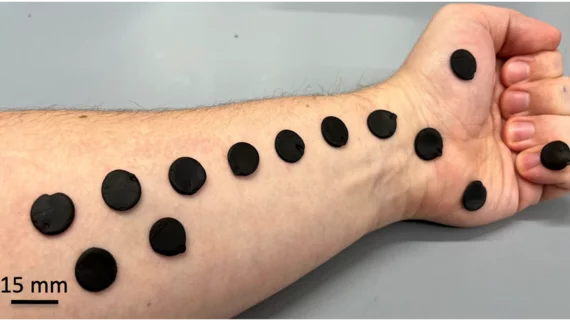Homemade electrodes made of putty capture heart data as well as some commercial devices
Researchers have found that homemade play-putty can effectively capture electrocardiogram (ECG) signals at a level comparable to commercially available electrodes. The play-putty is made with a simple mix of flour, water, salt, cream of tartar and vegetable oil—but the potential is much more than one may expect.
The group behind these so-called “squishy circuits” in Device, an open-access journal from Cell Press.[1]
“We used the squishy circuits as an interface to measure electricity or measure bioelectrical potentials from a human body,” senior author Dmitry Kireev, PhD, MSc, an assistant professor of biomedical engineering at the University of Massachusetts Amherst, explained in a statement.
In addition to ECG signals, Kireev et al. found that the squish circuits could capture electroencephalogram (EEG), electrooculogram and electromyography measurements.
From a cost perspective, he added, these homemade electrodes only cost about one penny to make.
“It’s something you can do at home or in high school laboratories, for example, if needed,” he said in the same statement. “You can democratize these applications [so it’s] more widespread.”
In the full analysis published in Device, Kireev and his co-authors highlighted the “durability and functionality” of their squishy circuits. They described the homemade electrodes as “a viable and effective alternative for wearable electrophysiology, such as monitoring the brain and cardiac activities, with signal-to-noise ratios up to 115, while being simple to produce and apply.”
Click here to read the team’s full analysis.

